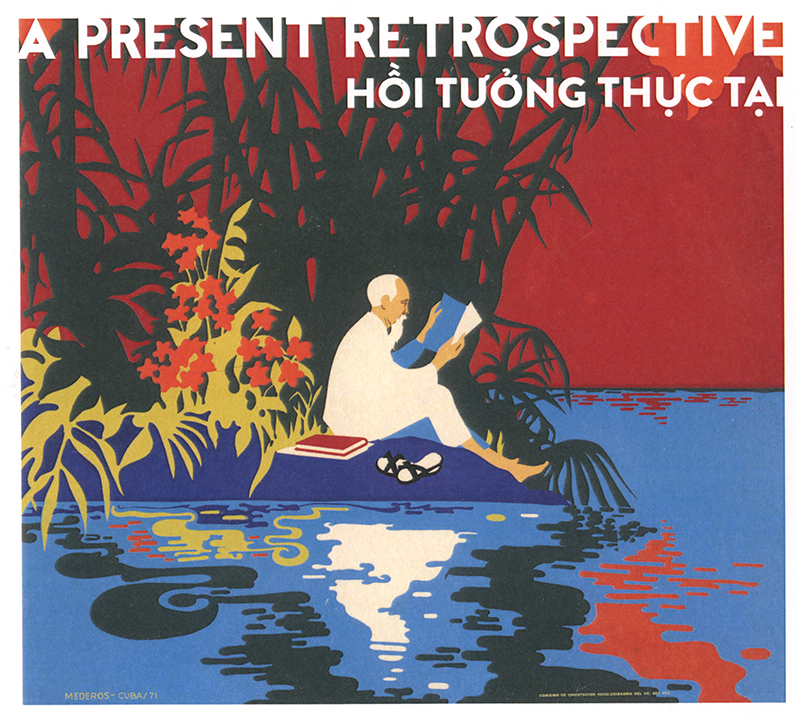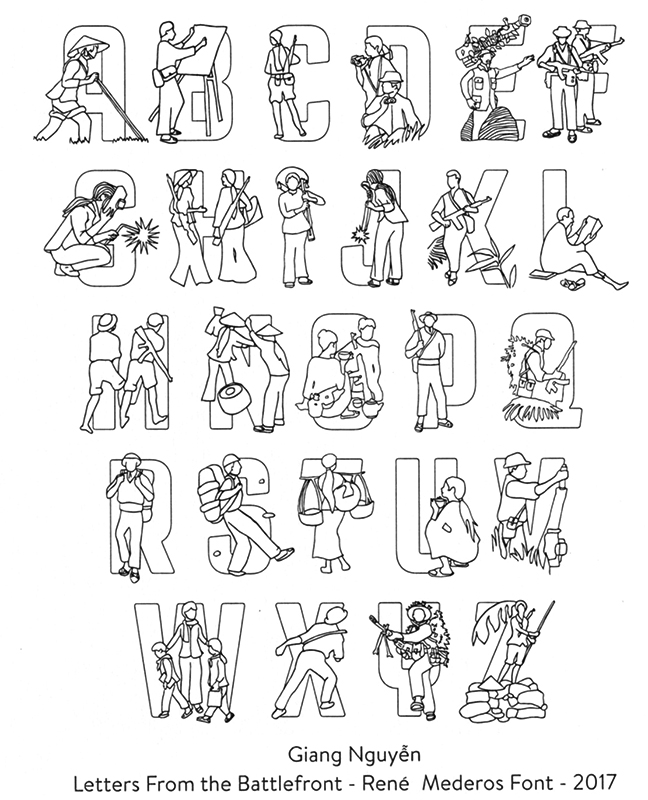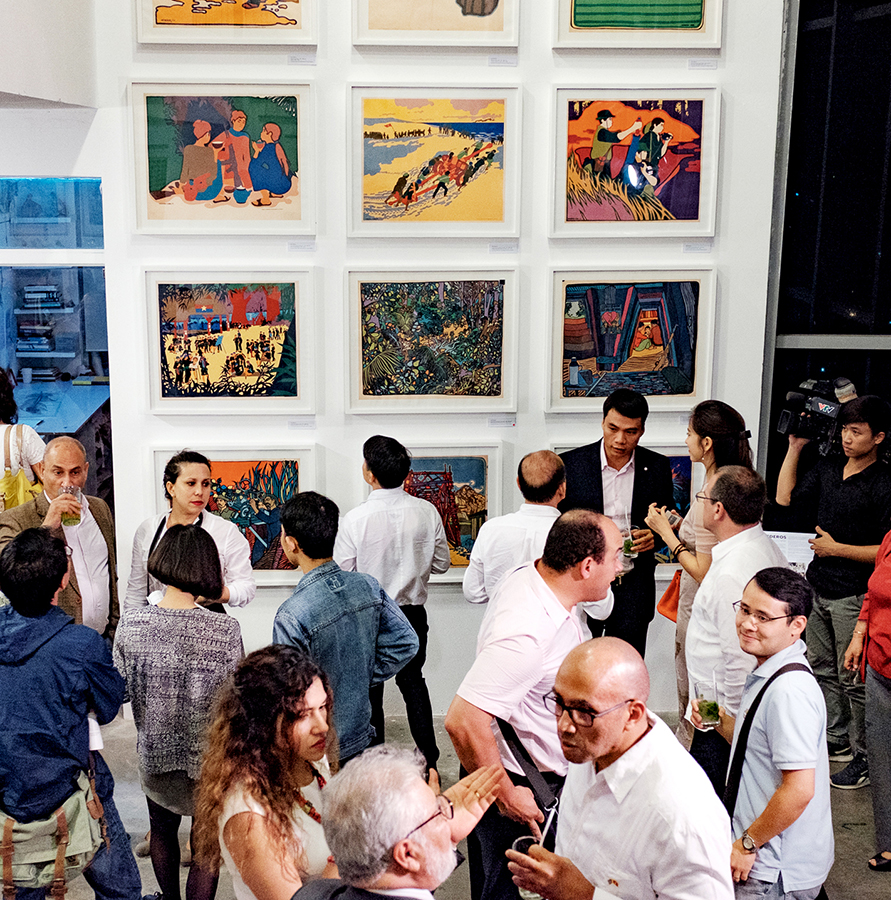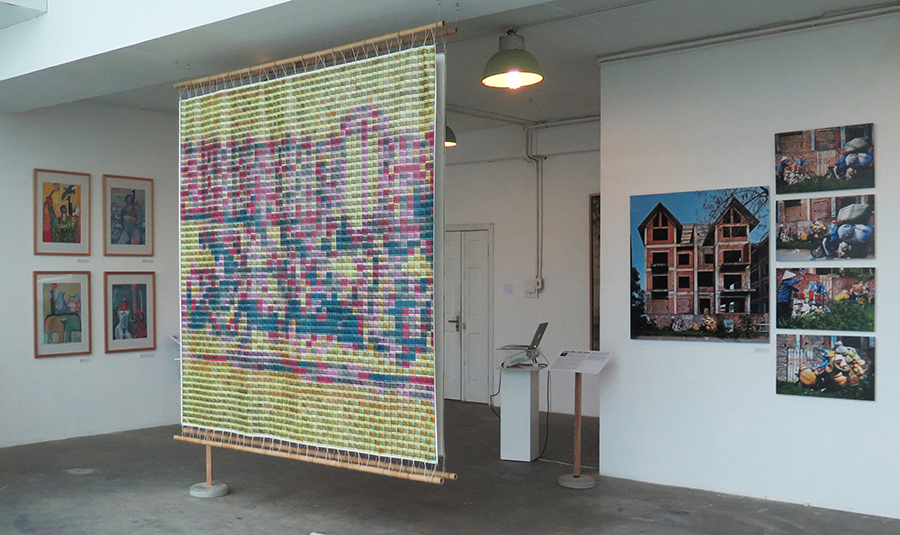Cuba-Viet
Nam Exhibition:
Art Solidarity Across Oceans
“A Present Retrospective: The historical work of René Mederos and the contemporary responses of artists”
Work Room Four Gallery, Hanoi, Viet Nam, May 19 – June 12, 2017.
Lincon Cushing, 2018. This essay originally appeared in The Daily Heller 1/23/2018
Cuba and Viet Nam may be on opposite sides
of the globe, but in the mid-1970s they had a lot in common. Both had
been colonized by European nations; Cuba had its war of independence
from Spain in 1898 stolen by the United States, and Viet Nam had its
independence from France taken over by the United States in 1954 in
what they called “The American War.” We all know how that went.Art Solidarity Across Oceans
“A Present Retrospective: The historical work of René Mederos and the contemporary responses of artists”
Work Room Four Gallery, Hanoi, Viet Nam, May 19 – June 12, 2017.
Lincon Cushing, 2018. This essay originally appeared in The Daily Heller 1/23/2018
As the war raged in Viet Nam, Cuba – which had shaken off U.S. control in 1959 – stood up to help. How? With art.
 Felix
René Mederos Pazos
(1933-1996) was a designer for the Cuban Communist Party, and in 1969
he was assigned to travel to Viet Nam to paint scenes of the war. He
visited both North and South Viet Nam, travelling along the Ho Chi Minh
trail with the liberation forces, experiencing first-hand the brutal
conditions of war and the courageous response of the Vietnamese people.
The artwork received wide attention in the United States through Karen
Wald’s article in the April 1970 issue of Ramparts that included six
large reproductions. Wald described the importance of this act:
Felix
René Mederos Pazos
(1933-1996) was a designer for the Cuban Communist Party, and in 1969
he was assigned to travel to Viet Nam to paint scenes of the war. He
visited both North and South Viet Nam, travelling along the Ho Chi Minh
trail with the liberation forces, experiencing first-hand the brutal
conditions of war and the courageous response of the Vietnamese people.
The artwork received wide attention in the United States through Karen
Wald’s article in the April 1970 issue of Ramparts that included six
large reproductions. Wald described the importance of this act:
“The first showing of the full exhibit of 32 paintings had its ‘opening’ via national television – putting an end once and for all to the small-clique, private gallery openings that had been the custom in the past. That original art set was presented as a gift to the Vietnamese embassy in Havana. Sixteen of the paintings were chosen for reproduction and 300 copies of each were made. These have been shown in schools, workplaces, and public buildings in every town and province in Cuba.”Another trip by Mederos in 1972 added to the body of work. Several of these images were reproduced in the United States as part of the anti-war and Cuba solidarity efforts. The Government of Cuba even reproduced seven of them as postage stamps.
Fast forward to February 2016, 41 years after the end of the Viet Nam War.
 Marcelo Brociner,
Mederos’ grandson living in the United States, emailed me and asked:
Marcelo Brociner,
Mederos’ grandson living in the United States, emailed me and asked:
I will be teaching in Hanoi, Viet Nam this upcoming summer for eight weeks, and during my time in Hanoi I plan to hold an art exhibit of my grandfather's Viet Nam artwork. I was hoping to discuss the possibility of acquiring high-quality prints of my grandfather's Viet Nam paintings for this summer's provisional exhibit.How could I say no? I immediately contacted my colleague Carol Wells, Executive Director of the Center for the Study of Political Graphics in Los Angeles. CSPG holds a collection of Mederos’ work that complemented my own (CSPG submitted 28 images 1969/1971 series, I offered a selection of other Mederos posters on the theme of Viet Nam as well as scans of the postage stamp series). In addition, in 1996 CSPG had mounted “Decade of Protest: Political Posters from the United States, Viet Nam, and Cuba, 1965-1975.” That catalog included many of Mederos’ works and an essay by art historian David Kunzle.
Even though Marcelo ultimately spent that interning at the Work Room Four studio instead of teaching, the project crept forward. Since it would have been extremely expensive to mount this exhibition with original prints, the use of digital surrogates made the display possible. Carol and I sent out high-resolution files, and I wrote an introductory essay.
Marcelo returned the following summer, and the show went up. The gallery displayed 18 prints, nine each from the 1969 and 1971 series posters.
 The
exhibition also featured five contemporary Vietnamese artists who
created new artwork in response to Mederos’ prints - Le Quy Tong (born
1977), Nguyen The Son (born 1978), Nguyen Nghia Cuong (born 1973), Pham
Khac Quang (born 1975) and Giang Nguyen born 1988). These artists
reflected on Mederos’ artistic and thematic inspiration. Tong noted
“Mederos’ work shows the beauty of the people, their work and the
nature of Vietnam, but he does not seem to want to show the fierceness
of the war, not wanting to show the price the people pay…I appreciate
the artists like Rene Mederos who are aware of their responsibility in
life and have love for work and human beings.” Cuong remarked “His work
has inspired artists… in Vietnam. I love the innocence of these pieces.
Today, however, propaganda art in Vietnam has yet to regain its
foothold… art is in need of renovation, and we need to break the rules.”
The
exhibition also featured five contemporary Vietnamese artists who
created new artwork in response to Mederos’ prints - Le Quy Tong (born
1977), Nguyen The Son (born 1978), Nguyen Nghia Cuong (born 1973), Pham
Khac Quang (born 1975) and Giang Nguyen born 1988). These artists
reflected on Mederos’ artistic and thematic inspiration. Tong noted
“Mederos’ work shows the beauty of the people, their work and the
nature of Vietnam, but he does not seem to want to show the fierceness
of the war, not wanting to show the price the people pay…I appreciate
the artists like Rene Mederos who are aware of their responsibility in
life and have love for work and human beings.” Cuong remarked “His work
has inspired artists… in Vietnam. I love the innocence of these pieces.
Today, however, propaganda art in Vietnam has yet to regain its
foothold… art is in need of renovation, and we need to break the rules.”A review of the exhibition in Viet Nam Bridge noted "This exhibition brings the focus away from conflict to a space of collaboration and solidarity. We as nations are now eternally bound and it is imperative that we all work together for a peaceful coexistence."
Exhibition curator Claire Driscoll created a multidisciplinary exhibition working closely with the artists as they developed their work throughout the five-month period leading up to the exhibition. The message by the Work Room Four founders, Claire Driscoll and Dorian Gibb, in the catalog ends with this observation:
Art is a unique connector of things. It both unifies and creates discursive dialogue. It can stimulate sensitive reflection on the past and prompt questions and directions for the future. It brings people together and communicates the diversity of cultural values. Even in the realms of propaganda art, often born of conflict, we can realise beauty and compassion.Rene Mederos would have been pleased at the continued impact of his work.
¡Compañero René Mederos, Presente!


Images:
Catalog cover
“As In Viet Nam- Tenacity, Organization, Discipline” Rene Mederos, for Editora Politica, 1970
Detail – Giang Nguyen, “Letters from the Battlefront, Rene Mederos Font – 2017
Reception and installation photos